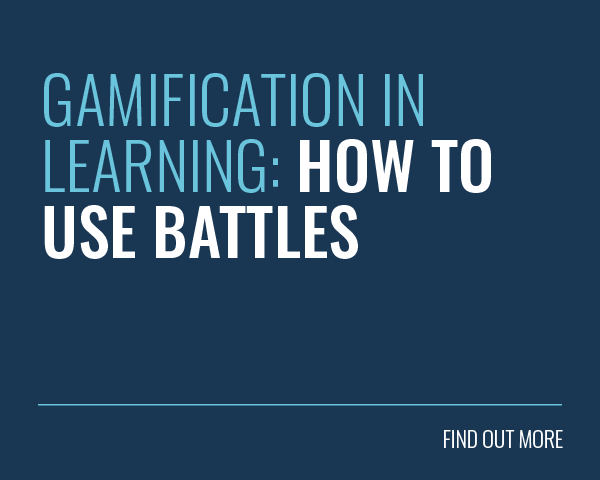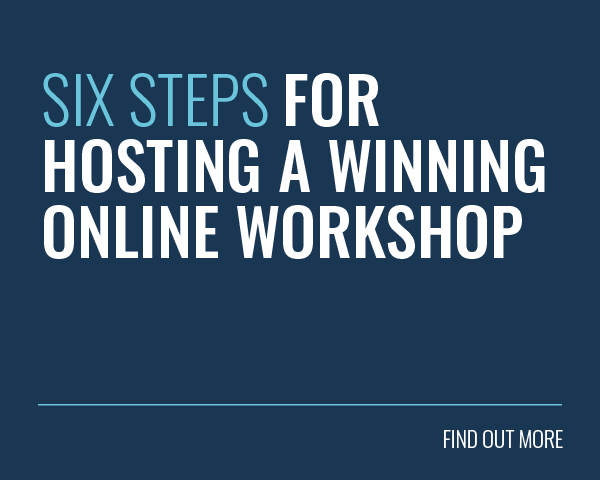Serious games are one of the latest trends in eLearning. Especially in the corporate sector, organizations are using them to motivate distracted and stressed staff members. However, there are still some who steer clear of gameplay, due to the myths that have surfaced in recent years. It’s time to set the record straight. Here are 8 common misconceptions that surround serious games in eLearning and the truth behind them.
1. Entertainment Comes Before Training
It’s all fun and games, right? How could levels, rewards, and fictional foes yield any real results? In fact, training always takes priority over entertainment when designing a serious game for eLearning. The goal is to make the eLearning experience more engaging and enjoyable. That should not come at the expense of achieving the organizational outcomes, though. This makes serious games the ideal online training tool for unmotivated or distracted corporate learners who need a healthy dose of gameplay to hold their interest.
2. Earning Rewards Is The Primary Goal
Rewards are there to support the training objectives and desired behaviours. However, they are not the primary purpose of serious games. Every element you include in your game design should align with the desired learning outcomes. For example, encourage corporate learners to use a specific skill in order to advance to the next level. In the process, they strengthen that ability and learn how to apply it in context.
3. Intrinsic Motivation Takes A Backseat
Many people mistakenly believe that serious games are rooted in extrinsic motivation. Corporate learners actively engage in them because they want to earn a reward or receive praise from their peers or online instructors. However, intrinsic motivation is actually the main aim. Serious games in eLearning give corporate learners the power to achieve their learning objectives while having fun. They also feel a sense of accomplishment, knowing that they made it to the finish line. As a result, they are more empowered to take on new tasks and overcome everyday obstacles. It’s important to note that extrinsic rewards, such as offering gift cards to top performers, should be minimal.
4. Serious Games Serve As Stand-Alone eLearning Activities
Serious games in eLearning are intended to be supportive and not stand-alone eLearning activities that provide a comprehensive overview of the subject matter. Ideally, they should reinforce key concepts and allow corporate learners to apply knowledge and skills. The key is to facilitate meaning so that they remember and retain the key concepts. It’s also wise to create bite-sized gaming experiences and then incorporate them into your eLearning course design. For example, at the end of each online lesson or module to enable corporate learners to put their knowledge into action. Some organizations even opt for a microlearning online training library to bridge performance gaps.
5. Mature Corporate Learners Aren’t As Fond Of Serious Games
You are never too old to enjoy a serious game. Corporate learners of all ages can benefit from these eLearning activities, even those who may not be as tech-savvy or tactile by nature. As is the case with all corporate learners, you need to emphasize the benefits and real-world uses beforehand. Mature corporate learners are more likely to participate and receive full benefits when they know it’s worth their time and effort. In addition, you must research your audience to identify what they need so that you can personalize the gameplay. For example, experienced corporate learners aren’t looking for the basics. Therefore, your serious game needs to provide them with opportunities to build more advanced skills and in-depth knowledge.
6. Serious Games And Gamification Are Interchangeable
Serious games and gamification are not the same things, contrary to popular belief. Gamification involves integrating game mechanics into your eLearning course design, such as badges, leaderboards, or levels. Serious games are independent eLearning activities that serve as reinforcement and refresher tools. You can use both approaches to create even more effective eLearning courses. For example, transform your existing eLearning course into a gamification experience, then use serious games to improve knowledge retention.
7. Serious Games Are A Fading Trend
Serious games in eLearning are here to stay. More and more organizations are integrating them in their eLearning programs, and private institutions have been using them for over a decade. Serious games inspire corporate learners and build excitement, even if the subject matter is dry. The rise of Augmented Reality (AR) and Virtual Reality (VR) has a variety of implications for serious games, as well. Serious games may be even more immersive and interactive in the coming years. For example, corporate learners will be able to step inside simulated worlds to master tasks more effectively without the real-world risk or interact with virtual objects in the workplace with the help of Augmented Reality technologies.
8. Serious Games Only Cater To Certain Learning Preferences
Serious games offer something for everyone. It’s true, kinesthetic and visual learners get more from the bargain because serious games involve more visual and tactile stimuli. That said, you’re also able to incorporate text-based and auditory elements to cover other learning preferences. For example, audio narrations, background music, and reading passages, as well as subtitles that make it easily accessible for corporate learners with special needs.
There’s one final misconception that should be set straight here and now. Anyone can create an amazing serious game, if they know which tools to use. For example, a rapid eLearning authoring tool that features built-in game templates and mechanics. You’ll also need subject matter knowledge and research data about your audience in terms of preferences and performance gaps. A talented eLearning team who can offer their skills and expertise doesn’t hurt, either.
Are you ready to get serious about motivating and engaging your online learners? Read the article 7 Tips To Integrate Serious Games In eLearning to discover 7 tips on how to integrate serious games into your eLearning strategy and walk the fine line between entertainment and online training.
 About Christopher Pappas
About Christopher Pappas
Christopher Pappas is founder of The eLearning Industry’s Network, which is the largest online community of professionals involved in the eLearning Industry. Christopher holds an MBA, and an MEd (Learning Design) from BGSU.
eLearning Blogger | EduTechpreneur | eLearning Analyst | Speaker | Social Media Addict





